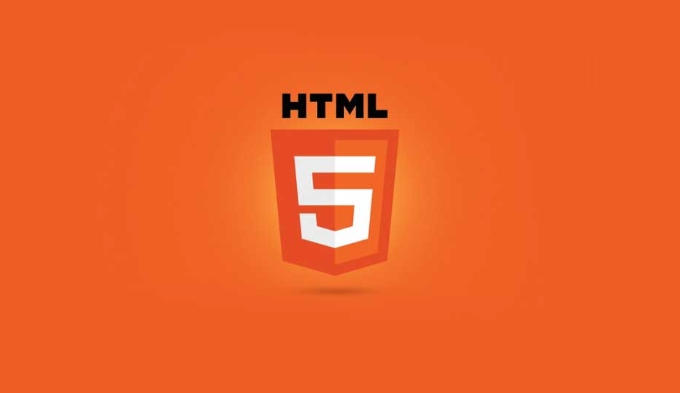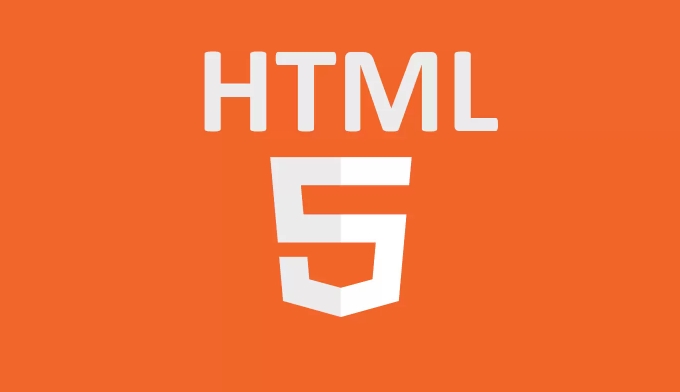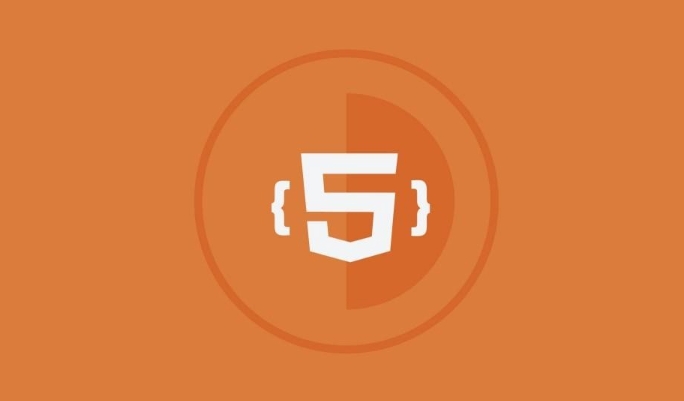The drop event is a key step in the HTML5 drag and drop API, used to get drag and drop data and process interactions. 1. The default behavior needs to be blocked in the dragover event to trigger the drop; 2. Read text, links or HTML content through event.dataTransfer.getData(); 3. Use dataTransfer.files to get the dragged file object; 4. Optionally add style feedback through the dragenter and dragleave events to improve the user experience.

Drag and drop operations are common in web development, such as uploading files, sorting lists, or moving elements. HTML5 native Drag and Drop API provides basic support, where drop events are a key part of the entire process. Only by handling this event can you truly complete the data transmission and interaction.

The role of drop event
When the user drags a draggable element (such as a div or image) to the target area and releases the mouse, drop event is triggered. This is the most important step in the entire drag-and-drop process, because only in this event can you get the drag-in data and decide what to do with it.

It should be noted that drop event will not take effect by default unless you block the browser's default behavior in the previous dragover event:
element.addEventListener('dragover', function(e) {
e.preventDefault(); // The default behavior must be blocked, otherwise drop will not fire});Get drag data
In the drop event, you can access the dragged data through event.dataTransfer . This object contains all the dragged information, such as text, URL, file, etc.

A common practice is to use getData() method to read data in a specific format, such as:
element.addEventListener('drop', function(e) {
e.preventDefault();
const text = e.dataTransfer.getData("text/plain");
console.log("The text dragged over is:", text);
}); If you are dragging a link, it may be in the "text/uri-list" format; if it is HTML content, you may need to use "text/html" . The data formats from different sources are different and need to be judged based on actual conditions.
- Text content is usually used as
"text/plain" - The link is usually
"text/uri-list" - The HTML snippet is
"text/html"
Process drag and drop files
In addition to text, in many scenarios, users will directly drag files into web pages, such as uploading avatars or importing documents. At this time, you can get the file object from dataTransfer.files :
element.addEventListener('drop', function(e) {
e.preventDefault();
const files = e.dataTransfer.files;
if (files.length > 0) {
const file = files[0];
console.log("Drag in file name:", file.name);
// Here you can continue to use FileReader to read file content}
}); This method is particularly suitable for drag-and-drop upload function. Note that files is an array object of class, so you need to access it with index. You cannot directly.forEach .forEach() , but you can use Array.from() to convert it into an array and then process it.
Drag style feedback (optional but recommended)
Although it is not necessary, giving users some visual feedback during the dragging process will improve the experience. For example, change the border color or background color of the target area to let the user know that this place can be placed.
You can add or remove a CSS class from dragenter and dragleave events:
const dropZone = document.getElementById("drop-zone");
dropZone.addEventListener("dragenter", () => {
dropZone.classList.add("highlight");
});
dropZone.addEventListener("dragleave", () => {
dropZone.classList.remove("highlight");
});This way, users can see obvious prompts when dragging, improving usability.
Basically that's it. Just remember a few key points: first block the default behavior of dragover , then listen to drop , and then read data or files according to your needs. Not complicated but it is easy to ignore details, especially data format and event order.
The above is the detailed content of Handling drop events in the HTML5 Drag and Drop API.. For more information, please follow other related articles on the PHP Chinese website!

Hot AI Tools

Undress AI Tool
Undress images for free

Undresser.AI Undress
AI-powered app for creating realistic nude photos

AI Clothes Remover
Online AI tool for removing clothes from photos.

Clothoff.io
AI clothes remover

Video Face Swap
Swap faces in any video effortlessly with our completely free AI face swap tool!

Hot Article

Hot Tools

Notepad++7.3.1
Easy-to-use and free code editor

SublimeText3 Chinese version
Chinese version, very easy to use

Zend Studio 13.0.1
Powerful PHP integrated development environment

Dreamweaver CS6
Visual web development tools

SublimeText3 Mac version
God-level code editing software (SublimeText3)

Hot Topics
 What is Microdata? HTML5 Explained
Jun 10, 2025 am 12:09 AM
What is Microdata? HTML5 Explained
Jun 10, 2025 am 12:09 AM
MicrodataenhancesSEOandcontentdisplayinsearchresultsbyembeddingstructureddataintoHTML.1)Useitemscope,itemtype,anditempropattributestoaddsemanticmeaning.2)ApplyMicrodatatokeycontentlikebooksorproductsforrichsnippets.3)BalanceusagetoavoidclutteringHTML
 Microdata in HTML5: The Key to Better Search Engine Ranking
Jun 12, 2025 am 10:22 AM
Microdata in HTML5: The Key to Better Search Engine Ranking
Jun 12, 2025 am 10:22 AM
MicrodatasignificantlyimprovesSEObyenhancingsearchengineunderstandingandrankingofwebpages.1)ItaddssemanticmeaningtoHTML,aidingbetterindexing.2)Itenablesrichsnippets,increasingclick-throughrates.3)UsecorrectSchema.orgvocabularyandkeepitupdated.4)Valid
 Audio and Video: HTML5 VS Youtube Embedding
Jun 19, 2025 am 12:51 AM
Audio and Video: HTML5 VS Youtube Embedding
Jun 19, 2025 am 12:51 AM
HTML5isbetterforcontrolandcustomization,whileYouTubeisbetterforeaseandperformance.1)HTML5allowsfortailoreduserexperiencesbutrequiresmanagingcodecsandcompatibility.2)YouTubeofferssimpleembeddingwithoptimizedperformancebutlimitscontroloverappearanceand
 Audio and Video : What about browser compatibility?
Jun 11, 2025 am 12:01 AM
Audio and Video : What about browser compatibility?
Jun 11, 2025 am 12:01 AM
Browser compatibility can ensure that audio and video content works properly in different browsers by using multiple formats and fallback strategies. 1. Use HTML5 audio and video tags and provide multiple format sources such as MP4 and OGG. 2. Consider automatic playback and mute strategies and follow the browser's policies. 3. Handle cross-domain resource sharing (CORS) issues. 4. Optimize performance and use adaptive bit rate streaming media technologies such as HLS.
 Audio and Video: can i record it?
Jun 14, 2025 am 12:15 AM
Audio and Video: can i record it?
Jun 14, 2025 am 12:15 AM
Yes,youcanrecordaudioandvideo.Here'show:1)Foraudio,useasoundcheckscripttofindthequietestspotandtestlevels.2)Forvideo,useOpenCVtomonitorbrightnessandadjustlighting.3)Torecordbothsimultaneously,usethreadinginPythonforsynchronization,oroptforuser-friend
 What is the purpose of the input type='range'?
Jun 23, 2025 am 12:17 AM
What is the purpose of the input type='range'?
Jun 23, 2025 am 12:17 AM
inputtype="range" is used to create a slider control, allowing the user to select a value from a predefined range. 1. It is mainly suitable for scenes where values ??need to be selected intuitively, such as adjusting volume, brightness or scoring systems; 2. The basic structure includes min, max and step attributes, which set the minimum value, maximum value and step size respectively; 3. This value can be obtained and used in real time through JavaScript to improve the interactive experience; 4. It is recommended to display the current value and pay attention to accessibility and browser compatibility issues when using it.
 Adding Audio and Video to HTML: Best Practices and Examples
Jun 13, 2025 am 12:01 AM
Adding Audio and Video to HTML: Best Practices and Examples
Jun 13, 2025 am 12:01 AM
Use and elements to add audio and video to HTML. 1) Use elements to embed audio, make sure to include controls attributes and alternate text. 2) Use elements to embed video, set width and height attributes, and provide multiple video sources to ensure compatibility. 3) Add subtitles to improve accessibility. 4) Optimize performance through adaptive bit rate streaming and delayed loading. 5) Avoid automatic playback unless muted, ensuring user control and a clear interface.
 HTML audio and video: Examples
Jun 19, 2025 am 12:54 AM
HTML audio and video: Examples
Jun 19, 2025 am 12:54 AM
Audio and video elements in HTML can improve the dynamics and user experience of web pages. 1. Embed audio files using elements and realize automatic and loop playback of background music through autoplay and loop properties. 2. Use elements to embed video files, set width and height and controls properties, and provide multiple formats to ensure browser compatibility.






